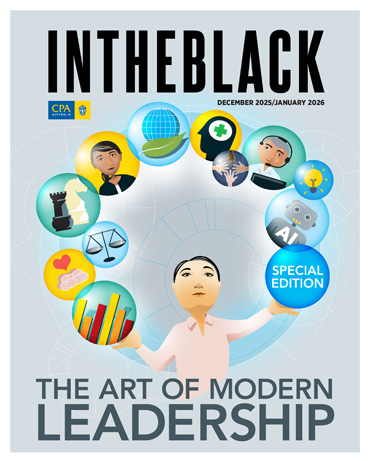Loading component...
At a glance
- Almost half of Australia’s tax-deductible donations come from people in the top 1 per cent of income earners.
- A recent Productivity Commission report recommended against increasing the tax deductibility of donations.
- Singapore has high tax deductions, but maintains tighter control over which charities have tax-deductible status.
By Prue Moodie
The fusion of tax breaks and philanthropy has given rise to what seems like an embarrassment of donations, both globally and in Australia. Yet the need for charity still nearly always outstrips supply.
On the surface, a high level of donations would seem to be the mark of a kind and responsible society. Nurturing a community of givers is the usual government rationale for providing tax advantages to donors.
Back in 2022, before the Australian federal election, the Labor party promised to double donations by 2030, thereby building a “reconnected Australia”. In that reporting period, Australia’s charitable donations reached around A$13.9 billion (including non-tax-deductible donations), according to the 10th edition of the Australian Charities Report.
That’s respectable growth from approximately A$9.9 billion in 2017. But it might not tell the whole story.
The proportion of Australians making tax-deductible donations is trending down, which could mean either that fewer donations are being made or less people are claiming the deduction.
Moreover, almost half of Australia’s tax-deductible donations come from people in the top 1 per cent of income earners. Similar trends have been observed in the US and UK according to the Australian Government Productivity Commission (PC) report Future foundations for giving, released in May 2024.
Policy options
The giving gap poses a challenge to government philanthropic strategy.
Policy settings could aim to increase the levels of donations, as Labor pledged in 2022 and as Singapore appears to be doing. [See breakout.] Alternatively, Australia’s philanthropic strategy could be designed to encourage altruism without placing excessive strain on the public purse.
Annually, tax deductions for gifts and donations from individuals and corporations (including donations made to ancillary funds) cost the public purse about A$2.2 billion, according to Treasury estimates.
Presiding commissioner of the Future foundations for giving report, Alex Robson, says doubling donations by 2030 wasn’t a target of the PC report. “You’d probably get to a doubling with no policy change,” he says. “We didn’t take a view on that.”
Instead, the report’s recommendations focus on the tricky balancing act of removing friction from the system to encourage giving, while doing as little damage as possible to public finances.
Structured philanthropic giving: A complete guide
Examine tax deductibility
Robson characterises Australia’s tax deductions for philanthropy as already generous given an international comparison. In Australia, “you could claim a billion dollars against your taxable income if you give to a charity with deductible gift recipient status, whereas in many other jurisdictions it’s not like that,” he says.
“If you look at the US, for example, there are various kinds of restrictions on the amount that you can claim.”
Even in Singapore, with its 250 per cent tax deductions, the tax impact may not be as beneficial to the donor as it is in Australia because of Singapore’s lower tax rates of 24 per cent or less. Also, Singapore has a narrower range of charities that qualify for tax-deductible status, implying a higher degree of control over donors’ choices.
"The Australian not-for-profit sector provides many services such as healthcare and education on behalf of government and relies on government funding to provide such services."
Illustrating the delicate fiscal trade-off between giving and tax deductibility, Ram Subramanian, financial reporting lead at CPA Australia, points out that Australian government funding provides more than half of charity revenue, and that all philanthropic financial donations (not just tax-deductible donations) provide only 6.9 per cent.
“This reflects the fact that the Australian not-for-profit sector provides many services such as healthcare and education on behalf of government and relies on government funding to provide such services,” Subramanian notes.
The PC report did not recommend increasing the tax deductibility of donations.
Robson says that price elasticity (for example, the tax price) modelling suggests that “for a small change in tax deductibility, you get an extra donation, but that’s exactly offset by a reduction in government revenue. So society as a whole is no better off or worse off.”
Reforms to DGR and ancillary funds
Instead of raising tax deductibility, one of the Productivity Commission’s most powerful recommendations was reform to the Deductible Gift Recipient (DGR) system, which defines which charities are eligible to provide a tax deduction. There are about 25,000 entities with DGR status, but the report describes the DGR system as “not fit for purpose”.
“The DGR should be as broad as possible to cover as many entities as possible,” says Robson.
The report noted that applying for DGR status should be fair, simple and transparent. It should direct donations towards charitable activities that are likely to provide the greatest net benefits to the whole community.
If the government decides to reform DGR as recommended, more charities would gain DGR status, says Robson.
“Applying some of the estimates, we find a modest increase in overall giving.”
But again, there are trade-offs. For example, the report recommends removing tax deductions for school building funds from DGR status. It noted that “the transaction here is closer to a market exchange of donations for lower fees”.
The Labor government ruled out this particular recommendation prior to the May 2025 election.
The philanthropic system is vast, and unintended consequences from every change ripple through the system. The job of the PC is to try to anticipate as many of these consequences as possible.
Another recommendation was to raise the annual minimum distribution rates of public and private ancillary funds to between 5 per cent and 8 per cent of net assets, from the current 4 per cent and 5 per cent respectively.
Ancillary funds are special-purpose donation vehicles that allow an immediate tax deduction, even if distributions to charities are spread over a number of years.
CPA Australia and Chartered Accountants ANZ’s joint submission to the draft version of the PC report cautioned that “mandatory minimum drawdowns have the potential to threaten the liquidity of funds which are set up for longer terms, particularly ones intended to run in perpetuity”.
A charity speaks out
Angela Taylor FCPA, CFO of Victoria-based DGR charity Asylum Seeker Resource Centre, supports a higher contribution rate from ancillary funds.
“One of the findings of the report, lifting the annual percentage of giving for those ancillary funds, resonates with me,” says Taylor. “That sounds like a very logical conclusion, because it would give more immediate access to funding for not-for-profits.”
"What motivates our donors is that asylum seekers and people seeking refuge have human rights — and those human rights need to be upheld."
Taylor values the contribution that ancillary funds make. In her experience, they bring greater reliability to funding than relying predominantly on public fundraising each year.
“What motivates our donors is that asylum seekers and people seeking refuge have human rights — and those human rights need to be upheld."
The role of accountants
Accountants have an important role as the donations mount. While they have always advised donors on structuring their donations, Subramanian thinks that, in the case of large donations, accountants could also work with the accountant from the recipient charity.
“They can ensure there are procedures and policies in place for the donation to be applied to its intended purpose.
“Sometimes there’s a lag between the receipt of the funds and use of the funds. The accountant can advise on prudent investment and or management of money until it’s needed,” he says.
“In the case of a donation made for capital purposes — for example, the construction of a building — the accountant can assist in project managing the funds over the period of capital expenditure.”
All giving matters
Before the era of tax deductions, giving to charity was primarily an act of conscience, an expectation of acquiring merit or an expression of kindness.
Low- and middle-income Australians may well meet this definition more than the tax-deductibility data shows.
Philanthropy Australia’s Greater Giving report estimates that about a quarter of donations to charity are not claimed against tax.
What’s more, Australia was placed number eight on the World Giving Index 2024, beaten by (from number one) Indonesia, Kenya, Singapore, The Gambia, Nigeria, the US and Ukraine.
Around 59 per cent of the Australian sample said they donated to charity, and 34 per cent said they had volunteered. The Australian system provides no tax incentives for volunteering, and the PC report made no explicit recommendations.
One of the downsides to the dominance of the donor class is that its emergence could lessen the motivation of others to give. The PC report highlights the difficult government policy choices that will help ensure the system builds a stronger community.
How Singapore promotes philanthropy
Singapore leapfrogged 19 places to land near the top of the Charities Aid Foundation's World Giving Index 2024.
In recent years the Singapore government has moved to promote its philanthropic credentials. An Economic Development Board article in 2023 announced: "Singapore can be a philanthropic hub for South-East Asia".
As of 2024, Singapore-based family offices can receive a 100 per cent tax deduction for donations to overseas charities if they are made through approved channels, which will boost Singapore’s position as a regional philanthropic hub.
And from 1 January 2025, both individuals and corporations can receive a 100 per cent tax deduction for direct contributions to overseas-based charities under the Overseas Humanitarian Assistance Tax Deduction Scheme.
These innovations dovetail neatly with the Variable Capital Companies (VCCs) structure Singapore launched five years ago. VCCs aim to increase the funds management industry and provide discretion and tax incentives to family offices, including foreign corporate entities relocating to Singapore.
It is a blend of business and charity that is likely to appeal to a mobile business class who prefer to decide for themselves where their wealth is distributed, rather than leaving it to high-taxing governments.
As for Singapore’s rocket ride up the World Giving Index, Charities Aid Foundation says the main reason for Singapore’s jump to third place overall in 2024 was the upsurge in volunteering.
Around 40 per cent of the Singapore sample said they had volunteered, compared with 24 per cent in the 2023 report, and they are looking to recruit more than 2400 “Silver Guardians” — senior citizens — by 2028, from Active Aging Centres island-wide.
Singapore’s Corporate Volunteer Scheme allows companies to deduct up to 250 per cent for expenses incurred in sending employees to volunteer with approved organisations.
Singaporeans can also claim a 250 per cent tax deduction for donations to government-approved institutions.

